Fantasia 2000
7.2 /10 1 Votes
82% Rotten Tomatoes 59% Metacritic Genre Animation, Family, Fantasy Country United States | 7.3/10 IMDb 3/4 Roger Ebert Director See below Duration Language English | |||||||||||||||||||||||||||||||||
 | ||||||||||||||||||||||||||||||||||
Release date December 17, 1999 (1999-12-17) (Premiere)January 1, 2000 (2000-01-01) (IMAX)June 16, 2000 (2000-06-16) (General release) Writer Eric Goldberg (story), Hans Christian Andersen (story), Joe Grant (original concept), Perce Pearce (story), Carl Fallberg (story), Gaetan Brizzi (story), Paul Brizzi (story), Don Hahn, David Reynolds, Irene Mecchi, Elena Driskill (concept for "Death & Re-birth of the Forest") Directors Eric Goldberg, James Algar, Pixote Hunt, Francis Glebas, Don Hahn, Hendel Butoy, Gaetan Brizzi, Paul Brizzi Songs Symphony no 5 Cast (Introductory Host), (Host), (Hostess), (Host), Penn Jillette (Host), (Conductor)Similar movies Straight Outta Compton , Mickey, Donald, Goofy: The Three Musketeers , Alvin and the Chipmunks , Mickey and the Beanstalk , Mickey and the Seal , Window Cleaners | ||||||||||||||||||||||||||||||||||
Fantasia 2000 5th symphony
Fantasia 2000 is a 1999 American animated film by Walt Disney Feature Animation and Walt Disney Pictures, and released by Buena Vista Pictures. Produced by Roy E. Disney and Donald W. Ernst, it is the 38th Disney animated feature film and the sequel to Fantasia (1940). Like its predecessor, Fantasia 2000 consists of animated segments set to pieces of classical music. Celebrities including Steve Martin, Itzhak Perlman, Quincy Jones, Bette Midler, James Earl Jones, Penn & Teller, and Angela Lansbury introduce each segment in live action scenes directed by Don Hahn.
Contents
- Fantasia 2000 5th symphony
- Program
- Development
- Symphony No 5
- Pines of Rome
- Rhapsody in Blue
- Piano Concerto No 2
- The Carnival of the Animals Finale
- Pomp and Circumstance
- The Firebird
- Music
- Interstitials
- Release
- Box office
- Soundtrack
- Home video
- Critical reaction
- Credits
- References
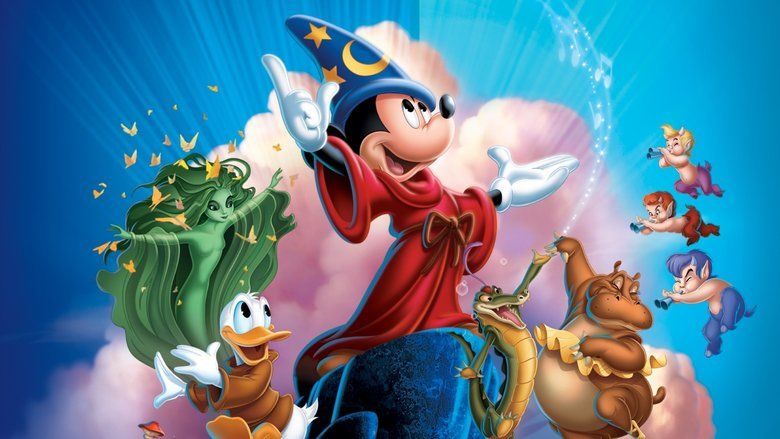
After numerous unsuccessful attempts to develop a Fantasia sequel, The Walt Disney Company revived the idea shortly after Michael Eisner became chief executive officer in 1984. The commercial success of the 1991 home video release of Fantasia convinced Eisner that there was enough public interest and funds for a sequel and he assigned Disney as executive Producer. The music for six of the film's eight segments is performed by the Chicago Symphony Orchestra conducted by James Levine. The film includes The Sorcerer's Apprentice from the 1940 original. Each new segment was produced by combining traditional animation with computer-generated imagery.
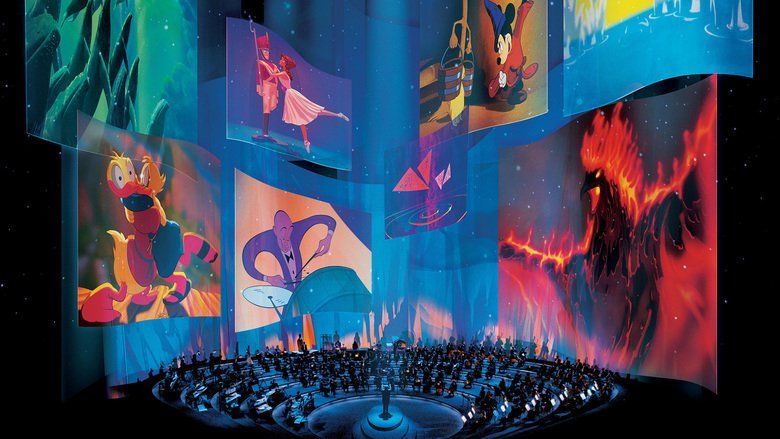
Fantasia 2000 premiered on December 17, 1999, at Carnegie Hall in New York City as part of a concert tour that also visited London, Paris, Tokyo, and Pasadena, California. The film was released in 75 IMAX theaters worldwide from January 1 to April 30, 2000, marking the first animated feature-length film to be released in the format. Its general release in traditional theaters followed on June 16, 2000. Some critics praised the film while others singled out its uneven quality. Budgeted at about $80–$85 million, the film has earned $90.8 million in gross revenue worldwide.

Program

The film begins with the sound of an orchestra tuning and Deems Taylor's introduction from Fantasia. Panels showing various segments from Fantasia fly in outer space and form the set and stage for an orchestra. Musicians take their seats and tune up and animators draw at their desks before James Levine approaches the conductor's podium and signals the beginning of the first piece.
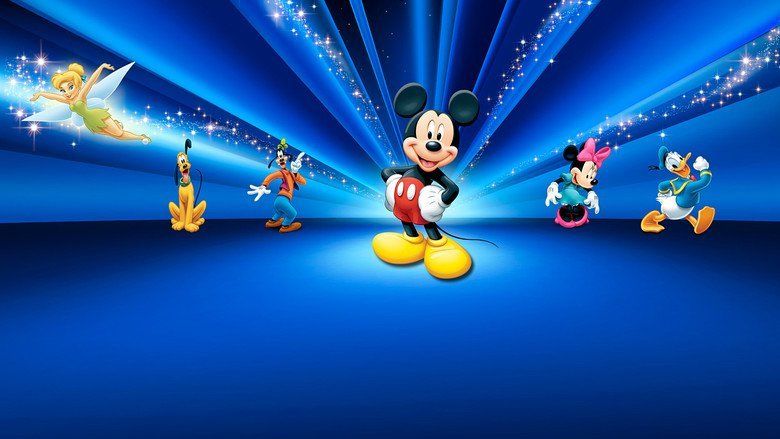
Development
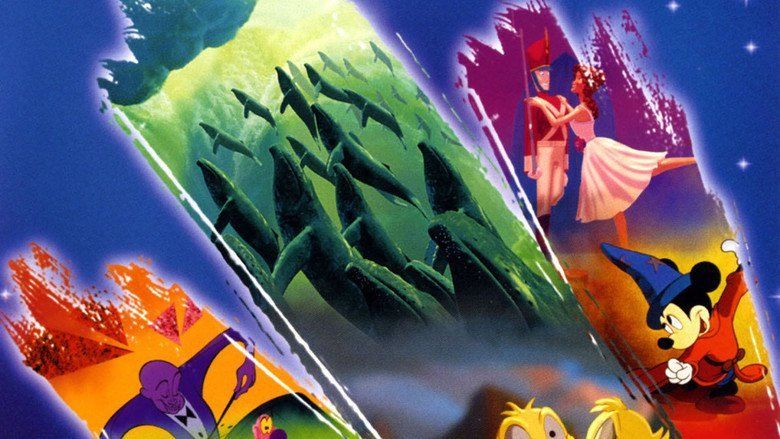
In 1940, Walt Disney released Fantasia, his third animated feature film, consisting of eight animated segments set to pieces of classical music. Initially he planned to have the film on continual release with new segments replacing older ones so audiences would never see the same film twice. The idea was dropped following the film's initial low box office receipts and a mixed response from critics. Following preliminary work on new segments, the idea was shelved by 1942 and was not revisited for the remainder of Disney's life. In 1980, animators Wolfgang Reitherman and Mel Shaw started preliminary work on Musicana, a feature film "mixing jazz, classical music, myths, modern art ... following the old Fantasia format" that was to present "ethnic tales from around the world with the music of the various countries". The project was cancelled in favor of Mickey's Christmas Carol (1983).

The idea of a Fantasia sequel was revived shortly after Michael Eisner became chief executive officer of The Walt Disney Company in 1984 when Walt's nephew, vice chairman Roy E. Disney, suggested it to him at a lunch, something that first entered his mind ten years earlier. Disney recalled his reaction: "It was as if a big light bulb went on over his head. The idea was enticing, but we didn't have the resources to carry it out". Walt Disney Studios chairman Jeffrey Katzenberg showed a lack of interest in the film. He had once asked André Previn to work on a Fantasia film but Previn declined after he learned it was to feature songs by the Beatles rather than classical music. Eisner approached Leonard Bernstein with the same idea, but while he seemed enthusiastic, Bernstein died before production began. It took a further seven years before the film was considered, after the 1990 reissue of Fantasia grossed $25 million domestically and its 1991 home video release prompted 9.25 million pre-orders. Disney saw its commercial success as a sign that there was enough public interest in the Fantasia franchise to make a sequel. Eisner finally gave the green-light to the film in 1991 and agreed to have Disney serve as executive producer on the basis that its production was funded by the proceeds from the video sales. Disney assigned Donald W. Ernst as producer and Hendel Butoy as supervisory director having liked his work with The Rescuers Down Under (1990).
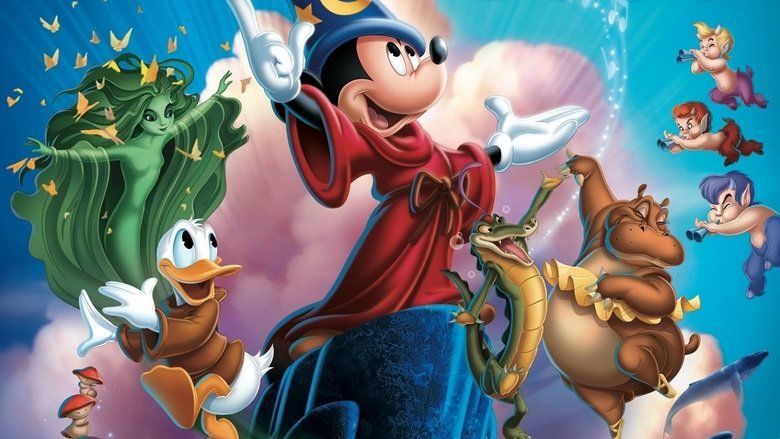
During the search for a suitable conductor, Disney and Walt Disney Feature Animation president Thomas Schumacher invited Metropolitan Opera conductor James Levine and manager Peter Gelb to a meeting in September 1991. Disney recalled: "I asked James what his thought was on a three minute version of Beethoven's fifth symphony. He paused and went 'I think the right three minutes would be beautiful'". In November 1992, Disney, Schumacher, Levine, Gelb, and Butoy met in Vienna to discuss a collection of story reels developed, one of them being Pines of Rome, which Levine took an immediate liking to. Butoy described Levine's enthusiasm toward the film as "like a kid in a candy store". Because Katzenberg continued to express some hostility towards the film, Disney held development meetings without him and reported directly to Eisner instead, something that author James B. Stewart wrote "would have been unthinkable on any other future animation project."
Production began under the working title of Fantasia Continued with a release in 1997. The title changed to Fantasia 1999 followed by Fantasia 2000 to coincide with its theatrical release in 2000. Disney formed its initial running order with half of the Fantasia program and only "three or four new numbers" with the aim of releasing a "semi-new movie". Realizing the idea would not work, he kept three Fantasia segments—The Sorcerer's Apprentice, The Nutcracker Suite, and Dance of the Hours—in the program for "quite a while". In the end, Dance of the Hours was dropped and The Nutcracker Suite was replaced by Rhapsody in Blue during the last few months of production following the response from numerous test screenings. Disney kept The Sorcerer's Apprentice in the final program as a homage to Fantasia. The segment underwent digital restoration by Cinesite in Los Angeles. Disney considered using Clair de Lune, a piece originally made for Fantasia that followed two Great white herons flying through the Everglades at night, but thought it was "pretty boring". An idea to have "a nightmare and a dream struggling for a sleeping child's soul" to Rhapsody on a Theme of Paganini by Sergei Rachmaninoff was fully storyboarded, but fell through.
Symphony No. 5
Symphony No. 5 is an abstract segment created by Pixote Hunt with story development by Kelvin Yasuda. In December 1997, after rejecting pitches from four other animators, Disney and Ernst asked Hunt for his ideas. Hunt first thought of the story on a morning walk in Pasadena, California, one depicting a battle of "good" multi-colored shapes against "evil" dark ones and how the conflict resolves itself. It took Hunt approximately two years, from start to finish, to complete the segment. Disney and Ernst decided to go with Hunt's idea; Hunt avoided producing an entirely abstract work because "you can get something abstract on every computer screen" with ease. Hunt divided the segment into 31 mini-scenes, noting down points in which he would employ vivid color when the music was bright and fluid, and then switch to darker hues when the music felt darker and denser. To gain inspiration in how the shapes would move, Hunt and his associates visited San Diego Zoo, a butterfly farm, and observed slow motion footage of bats. The segment combines hand drawn backgrounds using pastels and paint that were scanned into the Computer Animation Production System (CAPS), and computer-generated imagery (CGI) of abstract shapes and effects, which were layered on top. Hunt explained that scanning each drawing "was a one-shot deal" as the platen that pressed onto it would alter the pastel once it had been scanned. At one point during production, Hunt and Yasuda completed 68 pastel drawings in eight days. The segment was produced using Houdini animation software.
Pines of Rome
Pines of Rome was the first piece Disney suggested for the film, as well as the first to be animated; designs appeared in the studio's dailies as early as October 1993. Butoy served as director with James Fujii handling the story. The opening to the piece gave Disney the idea of "something flying". Butoy sketched the sequence on yellow Post-it notes. The story originally involved the whales flying around from the perspective of a group of penguins, but the idea was scrapped to make the baby whale a central character. The whales were also set to return to Earth but Butoy said it "never felt quite right", leading to the decision to have them break through a cloud ceiling and enter a different world by the supernova. Butoy created a "musical intensity chart" for the animators to follow which "tracked the ups and downs of the music ... as the music brightens so does the color", and vice versa. He explained that because CGI was in its infancy during development, the first third of the segment was hand drawn using pencil to get a feel of how the whales would move. When the drawings were scanned into the CAPS system, Butoy found the whales were either moving too fast or had less weight to them. The drawings were altered to make the whales slow down and "more believable". The eyes of the whales were drawn by hand, as the desired looks and glances were not fully achievable using CGI. Butoy recalled the challenge of having the water appear and move as naturally as possible; the team decided to write computer code from scratch as traditional animation would have been too time consuming and would have produced undesired results. The code handling the pod of whales was written so the whales would move away if they were to collide and not bump into, overlap, or go through each other. The same technique was used for the stampede scene in The Lion King (1994), which was produced at the same time.
Rhapsody in Blue
Rhapsody in Blue is the first Fantasia segment with music from an American composer. It originated in 1992 when director and animator Eric Goldberg approached Al Hirschfeld about the idea of an animated short set to Gershwin's composition in the style of Hirschfeld's illustrations. Hirschfeld agreed to serve as artistic consultant and allowed the animators to use and adapt his previous works for the segment. Goldberg's wife Susan was art director. Duke is named after jazz artist Duke Ellington. The bottom of his toothpaste tube reads "NINA", an Easter egg referencing Hirschfeld's newborn daughter Nina. Rachel was designed after the Goldbergs' daughter and John is based on animation historian and author John Culhane and Hirschfeld's caricature of Alexander Woollcott. Goldberg took Hirschfeld's original illustration of Gershwin and animated it to make him play the piano. Featured in the crowd emerging from the hotel are depictions of Brooks Atkinson and Hirschfeld, along with his wife Dolly Haas. The segment was completed two months ahead of schedule. Despite this, the sequence was so chromatically complex that the rendering process using the CAPS system delayed Tarzan.
Piano Concerto No. 2
Piano Concerto No. 2 was directed by Butoy with art director Michael Humphries. It originated in the 1930s when Walt Disney wished to adapt a collection of Hans Christian Andersen fairy tales into an animated film. The artists completed a series of preliminary designs based on the stories, including ones for The Steadfast Tin Soldier from 1938 by Bianca Majolie that were stored in the studio's animation research library and used for a 1991 Disney book that retold the story accompanied with the storyboard sketches. When Disney suggested using the Shostakovich piece, Butoy flipped through the book and found the story's structure fit to the music. When Humphries saw the sketches he designed the segment with works by Caravaggio and Rembrandt in mind to give the segment a "timeless" feel, while keeping the colors "as romantic as possible" during the scenes when the soldier and ballerina are first getting acquainted. Live action footage of a real ballerina was used as a guide for the toy ballerina's movements. Butoy found the Jack-in-a-box a difficult character to design and animate with its spring base and how he moved with the box. His appearance went through numerous changes, partly due to the lack of reference material available to the team.
The segment marked the first time the Disney studio created a film's main characters entirely from CGI; only backgrounds, secondary, or tertiary characters had been produced using CGI beforehand. Initially Butoy asked Pixar to handle the computer graphics, but CGI artist Steve Goldberg convinced him to let Disney's own team produce it. The backgrounds were completed by hand. Originally the drain sequence included friendly rats who performed comical gags, but the team found it did not fit the mood of the rest of the segment. The drains became a more scary environment, something that Butoy said was "what the music was telling us to do". Rain animation from Bambi (1942) was scanned into the CAPS system and digitally altered to fit into the segment. The ending was to feature the original ending with the soldier and ballerina melting in the fire, but the music was too upbeat to animate it and was changed. An excerpt of the segment was shown at the 1998 SIGGRAPH conference.
The Carnival of the Animals, Finale
The Carnival of the Animals, Finale was directed by Goldberg; his wife Susan was its art director. The idea originated from animator Joe Grant, one of the two story directors on Fantasia who loved the ostriches in Dance of the Hours. When development for Fantasia 2000 began, Grant suggested the idea of having one of the ostriches play with a yo-yo to the last movement of The Carnival of the Animals. The ostriches were later changed to flamingos as Disney wished to avoid reintroducing characters from the original film and thought flamingos would look more colorful on the screen. Goldberg was partly inspired by co-director Mike Gabriel, who would play with a yo-yo as he took a break from working on Pocahontas (1995). The segment was produced with CGI and 6,000 watercolor paintings on heavy bond paper.
Pomp and Circumstance
Eisner suggested Pomp and Circumstance as a piece after he attended a graduation and thought its familiarity would be suitable for a Fantasia segment. His idea involved a selection of Disney Villains and heroes in a wedding procession carrying their future children who would then be presented in a ceremony. The animators' preliminary designs depicted a Greco-Roman setting; one of the staff members described the artwork as "an appalling abuse" of the characters. Eisner agreed to drop the story, but insisted that the music be used. After numerous ideas were scrapped due to the difficulty in writing a clear plot, animator and director Francis Glebas came up with the Noah's Ark idea that he titled Donald's Last Roundup! and pitched it thinking it was "laden with comic possibilities".
The Firebird
To close the film, Disney wanted for a piece that was "emotionally equivalent" to the Night on Bald Mountain and Ave Maria segments that closed Fantasia. Disney chose The Firebird as the piece to use after "half a dozen" others were scrapped, including Symphony No. 9 by Beethoven and the "Hallelujah Chorus" from Messiah by Handel. Disney thought of the idea of the Earth's destruction and renewal after passing Mount St. Helens following its eruption in 1980. French twins Paul and Gaëtan Brizzi from Disney's Paris studio were hired to direct the segment. The Sprite is a Dryad-like creature from Greek mythology. Her form changes six times; she is introduced as a Water Sprite who plants flowers as a Flower Sprite. She becomes a Neutral Sprite where her growth trail stops and an Ash Sprite when the forest has been destroyed. The segment ends with her as a Rain-Wave Sprite, followed by the Grass Sprite. The segment originally ended with the Sprite in the form of a flowing river that rises up into the sky and transforms into a Sun Sprite, but this was abandoned. The antlers on the elk were produced with CGI and placed on top of its body that was drawn traditionally. The segment was produced using Houdini animation software.
Music
The music to The Sorcerer's Apprentice was recorded on January 9, 1938 at Culver Studios, California with Leopold Stokowski conducting a group of session musicians. The recording of Rhapsody in Blue used in the film is an edited version of Ferde Grofé's orchestration of the piece performed by the Philharmonia Orchestra with conductor Bruce Broughton. The shortened version was made by cutting 125 bars of piano solo in three different places. A recording of James Levine conducting both pieces with the Philharmonia appears on the film's soundtrack.
The remaining six pieces were recorded at the Medinah Temple in Chicago, performed by the Chicago Symphony Orchestra conducted by Levine. Pines of Rome was re-arranged in 1993 by Bruce Coughlin, who reduced the four-movement piece by cutting the second movement and trimming sections of the third and fourth movements. The piece was recorded on March 28, 1994. The second recording involved Symphony No. 5, Carnival of the Animals, and Pomp and Circumstance, on April 25, 1994. Carnival of the Animals, Finale uses two pianos played by Gail Niwa and Philip Sabransky. Pomp and Circumstance was arranged by Peter Schickele and features the Chicago Symphony Chorus and soprano soloist Kathleen Battle. The next recording took place on April 24, 1995 for Piano Concerto No. 2 with pianist Yefim Bronfman. On September 28, 1996, The Firebird was the final piece to be recorded; its session lasted for three hours. The piece was arranged using four sections from Stravinsky's 1919 revision of the score.
Interstitials
Disney felt the need to keep interstitials (bridges) as used in Fantasia to give the viewer a chance to "cleanse their emotional palate" from the previous segment while providing some information about the next one. Don Hahn directed the live action scenes which were designed by Pixote Hunt. Hahn came up with the set and backgrounds while eating lunch; he proceeded to sketch a rough idea of what he imagined on a napkin. He "wanted to show images on shapes like big sails of a clipper ship. They fly in on the wind and form a sort of Stonehenge concert hall in the middle of a vast, empty, imaginary plain".
Hahn recalled some difficulty in finding someone to host the film, so the studio decided to use a group of artists and musicians from various fields of entertainment. The interstitials were filmed in various locations; the orchestra, Jones, Lansbury, and Bronfman were shot in Los Angeles, Perlman and Middler in New York City, and others in Boston, Massachusetts. Each scene was filmed in front of a green screen to allow shots of the orchestra or the set to be placed behind them. The shots of Levine, the artists, and the orchestra were filmed on October 31, 1998. The piano Grierson plays in his scene with Jones is the same one on which he played Rhapsody in Blue for the soundtrack.
Release
Fantasia 2000 was officially announced on February 9, 1999 during a Disney presentation at the New Amsterdam Theater in New York City which featured a screening of The Carnival of the Animals. The film premiered at Carnegie Hall in New York City on December 17, 1999 for three nights as part of a five city concert tour. The animation was presented on a screen above the stage while Levine conducted the Philharmonia Orchestra with a video auto-cue to time the music to the images. Performances followed at the Royal Albert Hall in London on December 21; the Théâtre des Champs-Élysées in Paris on December 22; the Orchard Hall in Tokyo on December 27; and the Pasadena Civic Auditorium in Pasadena, California on December 31, where Derrick Inouye conducted as part of a black tie $2,000-per-head New Year's Eve event. Each of the seven performances cost over $1 million.
Box office
Fantasia 2000 first opened in IMAX theatres for a four-month run from January 1 to April 30, 2000, becoming the first animated feature-length film shown in the format with six channel Dolby Digital surround sound. A temporary 622-seat theatre costing almost $4 million was built in four weeks for its Los Angeles run as Disney was unable to reach an agreement to show the film exclusively at the city's sole IMAX theatre at the California Science Center. After opening at 75 theaters worldwide, the film grossed over $2.2 million in 54 cinemas in North America in its opening weekend, averaging $41,481 per theater, and $842,000 from 21 screens in 14 markets. It set new records for the highest gross for any IMAX engagement and surpassed the highest weekly total for any previously released IMAX film. Its three-day worldwide gross surpassed $3.8 million, setting further records at 18 venues worldwide. Fantasia 2000 grossed a worldwide total of $21.1 million in 30 days, and $64.5 million at the end of its IMAX run.
Following its release in 1,313 regular theatres in the United States on June 16, 2000, the film grossed an additional $2.8 million in its opening weekend that ranked eleventh at the box office. This followed nearly half a year of release in the IMAX format, possibly blunting the amount earned in the weekends of wide release. Fantasia 2000 has earned a total worldwide gross of over $90.8 million since its release, with $60.7 million of that total from the U.S. market, and the rest through foreign box office sales. The film had cost around $90 million and was viewed by Eisner as Roy Disney's "folly".
Soundtrack
Walt Disney Records released 60,000 copies of a limited edition of the film's soundtrack on November 30, 1999 in the United States and internationally under the Sony Classical Label. With a running time of 60 minutes, the album features Levine conducting the Philharmonia Orchestra on Rhapsody in Blue and The Sorcerer's Apprentice at AIR Studios in London, and the Chicago Symphony Orchestra for the remaining six tracks using the recordings from the Medinah Temple. The soundtrack went on to reach the number one spot on the Billboard Top Classical Albums chart in July 2000. A Fantasia 2000 Deluxe Read-Along cassette and CD followed which contains two tracks telling the stories of Pomp and Circumstance and The Sorcerer's Apprentice, with narration by Pat Carroll. Included in the set is a 44-page book containing some of the film's artwork.
Home video
Fantasia 2000 was first released on VHS and DVD on November 14, 2000, with both featuring a specially made introduction in which Roy gives a history of key Disney productions and what innovations they brought. While it was available as a single-disc DVD, a three-disc set titled The Fantasia Anthology was released, including a digital copy of the film, a restored print of Fantasia to commemorate its 60th anniversary, and a third disc containing bonus features. On November 30, 2010, the film was issued for DVD and Blu-ray in a single and two-disc set with Fantasia and a four-disc DVD and Blu-ray combo pack. The Blu-ray transfer presents the film in 1080p high-definition video with DTS-HD Master Audio 7.1 surround sound. The film has been withdrawn from release after its return to the "Disney Vault" moratorium on April 30, 2011. In January 2015, the film became available on Netflix.
Critical reaction
Fantasia 2000 holds a "Certified Fresh" rating of 82% on Rotten Tomatoes. Its consensus reads: "It provides an entertaining experience for adults and children alike". On Metacritic, the film has a metascore of 59/100. Entertainment Weekly gave a "B-" rating; its reviewer, Bruce Fretts, called Symphony No. 5 "maddeningly abstract", Piano Concerto No. 2 "charmingly traditional", and thought Rhapsody in Blue fit well to the music, but Pomp and Circumstance "inexplicably inspires biblical kitsch". The review ends with a criticism of the inadequate quality of The Sorcerer's Apprentice on the IMAX screen. For Variety magazine, Todd McCarthy pointed out that while the original felt too long and formal, its "enjoyable follow-up is, at 75 minutes, simply too breezy and lightweight". He summarized the film "like a light buffet of tasty morsels rather than a full and satisfying meal".
In his December 1999 review for the Chicago Sun-Times, Roger Ebert gave the film a rating of three stars out of four. He described some of the animation, such as Firebird Suite, his favorite segment, as "powerful" though others, like the dance of the abstract triangles in Symphony No. 5, "a little pedestrian". He admired Rhapsody in Blue and its interlocking stories, pointing out its style was reminiscent of the Madeline picture books by Ludwig Bemelmans. He thought Pines of Rome presented itself well in the IMAX format and found the Piano Concerto No. 2 played "wonderfully as a self-contained film". He found The Sorcerer's Apprentice to be "not as visually sharp as the rest of the film". He nonetheless described the film on the whole as "splendid entertainment". Film critic Stephen Holden of The New York Times wrote that the film "often has the feel of a giant corporate promotion whose stars are there simply to hawk the company's wares" while noting the film "is not especially innovative in its look or subject matter." Firebird Suite was his favorite segment which left "a lasting impression of the beauty, terror, and unpredictability of the natural world". He found The Sorcerer's Apprentice fit well with the rest of the film and the battle in Symphony No. 5 too abbreviated to amount to much. He found the segment with the whales failed in that the images "quickly become redundant". He found Rhapsody in Blue to be the second-best in the film with its witty, hyper kinetic evocation of the melting pot with sharply defined characters. He found the segment with the flamingos cute and the one with the tin soldier to be romantic. James Berardinelli found the film to be of uneven quality. He felt Symphony No. 5 was "dull and uninspired", the yo-yoing flamingos "wasteful", and the New York City-based story of Rhapsody in Blue interesting but out of place in this particular movie. He found the story of the tin soldier to successfully mix its music with "top-notch animation" and "an emotionally rewarding story". He felt the Firebird section was "visually ingenious", and Pomp and Circumstance the most light-hearted episode and the one with the most appeal to children, in an otherwise adult-oriented film. To him The Sorcerer's Apprentice was an enduring classic.
David Parkinson of British film magazine Empire rates the film three stars out of five, calling it a "curate egg, with moments of hilarity and beauty alternating with the pompous and the banal". Moments of Symphony No. 5 and The Firebird he thought lacked the "abstract grace" from Toccata and Fugue from the original, and Pines of Rome was "even less successful" due to the computer imagery which affected its quality. He claims Rhapsody in Blue is "guilty of some dubious racial and sexual caricaturing", but hailed the film's IMAX presentation as "a breathtaking spectacle". He summarized the film as "slightly more successful" than Fantasia, more child friendly, and a "mixed bag of delights". Richard Corliss of Time magazine wrote a positive review of the film, citing Pines of Rome as "a superb, uplifting flight of the spirit" and Piano Concerto No. 2 "a gorgeous blend of traditional and computer animation". He drew a comparison to The Firebird with the 1997 Japanese animated film Princess Mononoke. Brian Sibley wrote a mostly negative review in Sight & Sound, a monthly magazine published by the British Film Institute, in June 2000. He pointed out that though the film includes moments of comedy and pastoral, "the themes running through the old 'Fantasia' – the struggle between light and dark, the war between chaos and order, the ultimate triumph of goodness – find only a pale equivalent in this new version". He compared the film's orchestra set to scenes from A Matter of Life and Death (1946) and thought the CGI in Symphony No. 5 lacked the technical qualities of Toy Story. Sibley argued the film lacked an even quality, highlighting Pines of Rome with its "breathtaking" opening before "its magic has been overtaken by chronic boredom" when the baby whale reunites with his parents. Pomp and Circumstance, he thought, contained "shamefully sloppy animation" but is saved by Donald's comical gags, but pointed out Rhapsody in Blue, with its "strong lines and vivid, flat colours that are fashionably retro", and the "classic Disneyesque ... exquisite beauty and raw natural violence" in Firebird Suite, as the film's most successful segments as they "ironically, hark back to older times".
Credits
Note: All segments performed by the Chicago Symphony Orchestra with conductor James Levine, except where noted.
References
Fantasia 2000 WikipediaFantasia 2000 IMDbFantasia 2000 Rotten TomatoesFantasia 2000 Roger EbertFantasia 2000 MetacriticFantasia 2000 themoviedb.org
